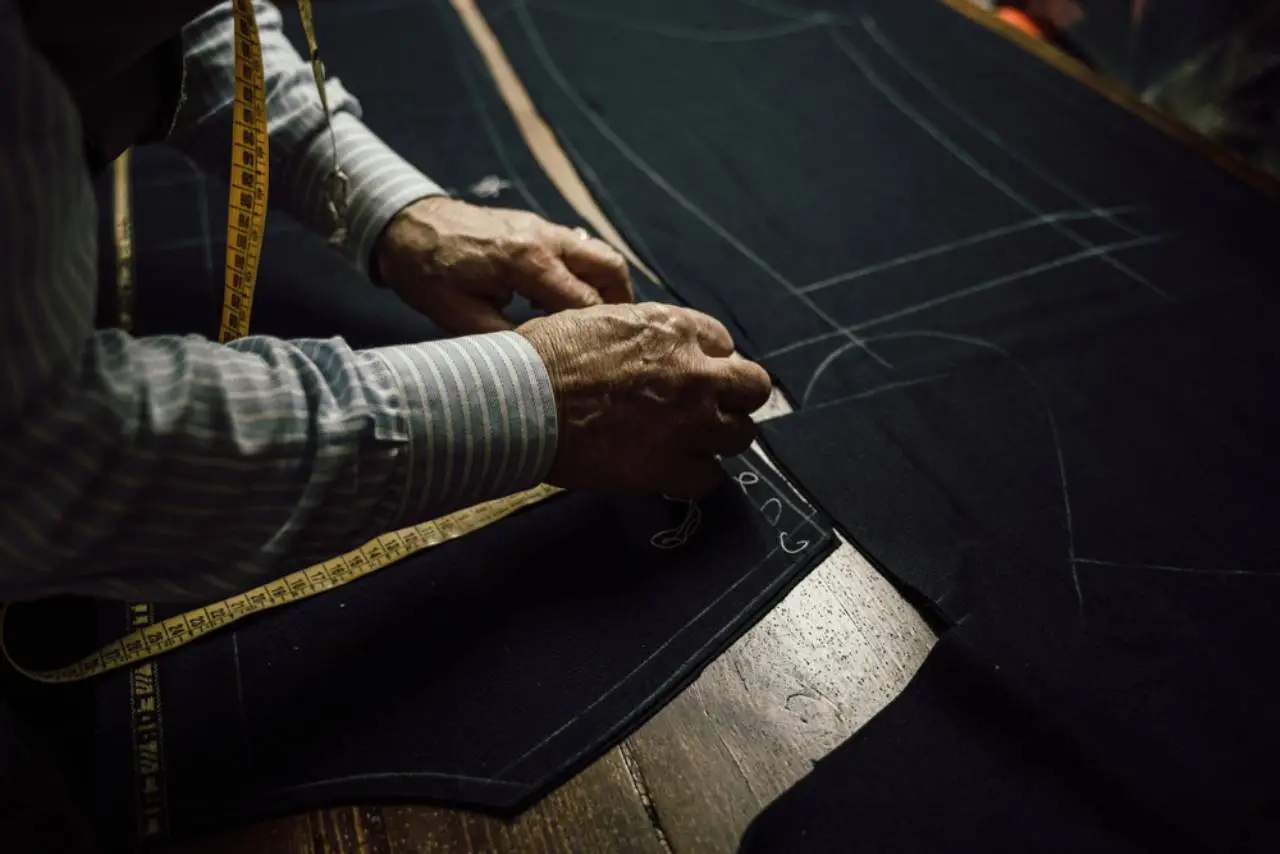In a bustling era of fast fashion and mass production, the allure of custom clothing manufacturing shines like a beacon of personal expression and unparalleled quality. This industry embodies a harmonious blend of traditional craftsmanship and cutting-edge technology, where each garment is meticulously crafted to reflect the individuality of its wearer. The demand for custom clothing manufacturing has surged in recent years, driven by a growing desire for unique and personalized fashion experiences. Consumers are no longer satisfied with cookie-cutter designs that flood the market; instead, they crave garments that speak to their distinct tastes, preferences, and identities. This shift in consumer behaviour has propelled custom clothing manufacturing into the spotlight, with fashion enthusiasts, entrepreneurs, and brands alike flocking to harness its transformative potential.
Moreover, the rise of e-commerce and digital platforms has further fueled the demand for custom clothing, offering a seamless and convenient way for customers to collaborate with designers and manufacturers from anywhere in the world. This global reach has expanded the market and fostered a sense of inclusivity and diversity within the fashion landscape. Join us as we unravel the threads of custom clothing manufacturing, exploring the intricate tapestry of creativity, precision, and personalization that defines this captivating universe.
What is Custom Clothing Manufacturing?
Custom clothing manufacturing refers to creating garments according to individual requirements, preferences, and measurements. Unlike mass-produced clothing designed for a general audience, custom clothing is tailored to fit a particular person’s body shape, style preferences, and unique specifications.
The process typically starts with a consultation between the customer and the custom clothing manufacturer or designer. During this consultation, detailed measurements are taken to ensure a precise fit, and the customer discusses their desired style, fabric choices, colour preferences, and any specific design elements they want to incorporate into the garment. Once all the details are finalized, the custom clothing manufacturing process begins. This may involve pattern making, fabric cutting, sewing, and finishing, all done with meticulous attention to detail to ensure the final product meets the customer’s expectations.
Importance Of Custom Clothing In The Fashion Industry
Custom clothing plays a significant role in the fashion industry for several key reasons:
- Personalization and Individuality: Custom clothing allows individuals to express their unique style preferences, personality, and identity. In a world saturated with mass-produced fashion, custom garments reflect the wearer’s individuality, creating a deeper connection between fashion and self-expression.
- Perfect Fit: One of the most significant advantages of custom clothing is the ideal fit it provides. Tailored to the wearer’s specific measurements, custom garments flatter the body shape and enhance comfort, boosting confidence and overall satisfaction with the clothing.
- Quality and Craftsmanship: Custom clothing often prioritizes quality materials and meticulous craftsmanship. This attention to detail results in well-made garments that look good and last longer, contributing to sustainable fashion practices by reducing the need for frequent replacements.
- Sustainability: Custom clothing can contribute to sustainability in the fashion industry by promoting a mindset of thoughtful consumption. Rather than buying multiple mass-produced items that may not be worn frequently, individuals invest in timeless, high-quality pieces that have a longer lifespan, reducing overall environmental impact.
- Empowerment and Inclusivity: Custom clothing empowers individuals to participate in the design process, giving them a voice in creating garments. This inclusivity extends to diverse body types, as custom clothing can accommodate a wide range of sizes and proportions, promoting body positivity and inclusivity in fashion.
- Innovation and Creativity: Custom clothing fosters innovation and creativity within the fashion industry. Designers and manufacturers can experiment with new styles, techniques, and materials, pushing the boundaries of fashion and driving trends forward.
Custom Clothing Manufacturing Steps
Here are the typical steps involved in custom clothing manufacturing:
- Consultation and Design Brief: The process begins with a consultation between the customer and the custom clothing manufacturer or designer. During this phase, the customer discusses their style preferences, fabric choices, colour options, design details, and any specific requirements they have for the garment.
- Measurement and Pattern Making: Detailed measurements of the customer’s body are taken to ensure a precise fit. These measurements are used to create a pattern that serves as the blueprint for the garment. Pattern-making involves translating the customer’s measurements and design specifications into a template that guides the cutting and sewing.
- Fabric Selection: Once the Pattern is finalized, the next step is to select the fabric for the garment. Customers can choose from various fabrics based on their preferences, such as cotton, silk, wool, linen, polyester, or blends of different materials. The fabric choice influences the garment’s look, feel, and functionality.
- Cutting: After the fabric is selected, it is laid out according to the Pattern, and the pieces of fabric are cut using specialized cutting tools. Precision is crucial during this step to ensure that the fabric pieces match the Pattern accurately.
- Sewing and Assembly: Once the fabric pieces are cut, they are assembled according to the Pattern. Skilled sewists or tailors sew the garment together, paying attention to details such as seams, hems, darts, and closures (like buttons or zippers). This stage involves stitching the fabric pieces together to create the final garment.
- Fitting and Adjustments: After the initial assembly, the garment undergoes a fitting session with the customer. This allows the customer to try the garment to assess the fit and make necessary adjustments. Standard adjustments may include alterations to the garment’s length, width, or shape to ensure a perfect fit.
- Final Finishing: After adjustments based on the fitting session, the garment undergoes final finishing touches. This may include pressing, steaming, adding embellishments (such as embroidery or appliques), attaching labels or tags, and overall quality checks to ensure that the garment meets the customer’s expectations and standards of quality.
- Packaging and Delivery: The final step involves packaging the custom garment in a suitable manner, which may include garment bags or boxes to protect it during transit. The garment is then delivered to the customer through shipping or in-person pickup, depending on the arrangement made during the consultation phase.
How to Find a Custom Clothing Vendor?
Finding a reliable custom clothing vendor involves thorough research and evaluation. Start by identifying your specific needs and requirements, such as the type of garments you want to create, the level of customization required, and your budget constraints. Discover potential manufacturers through online resources, industry directories, and trade shows. Consider factors such as the manufacturer’s experience, reputation, production capabilities, quality standards, pricing structure, communication channels, and ability to accommodate your timeline. Conducting due diligence, requesting samples or references, and negotiating terms are crucial in selecting the proper custom clothing manufacturer.
Must Clothing stands out as a reputable provider of custom clothing manufacturing services, offering a seamless process from design consultation to final delivery, ensuring exceptional quality and customer satisfaction. Whether you need custom creations or large-scale production, we provide a comprehensive range of services tailored to your specific requirements. Our skilled artisans uphold a tradition of uncompromising craftsmanship, blending cutting-edge design elements with technical expertise to craft garments of exceptional quality. We provide a diverse selection of responsibly sourced fabrics. With over 25 years of experience, we bring knowledge and reliability to every project.
Popular Search:
Clothing Manufacturers Designer Shirt Manufacturers Men’s Designer Shirt Manufacturer in India Men’s Shirt Manufacturers Shirt Manufacturers in India Private Label Clothing Manufacturers Private Label Clothing Manufacturers in India School Uniform Manufacturers Uniform Manufacturer in India White Label Clothing White Label Clothing Manufacturer in India

